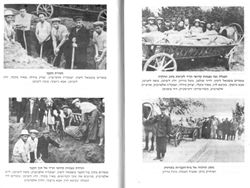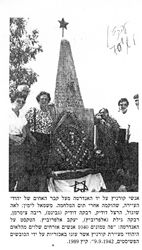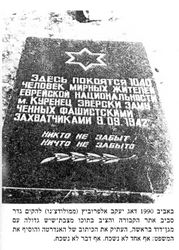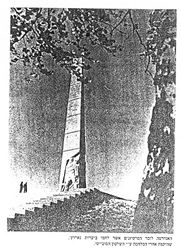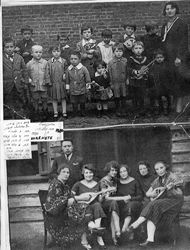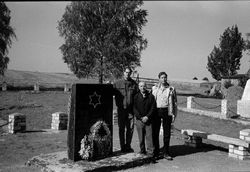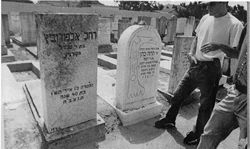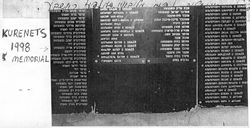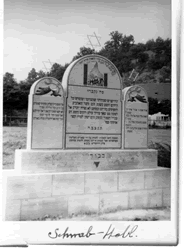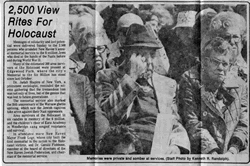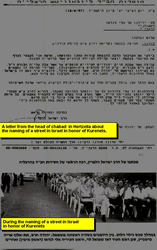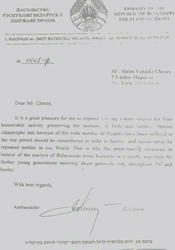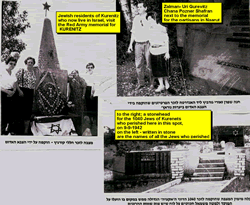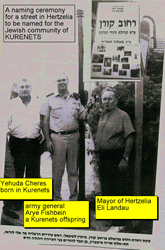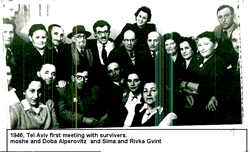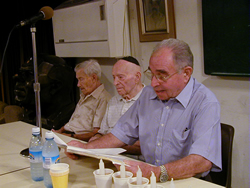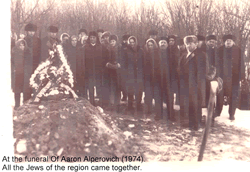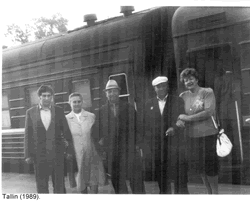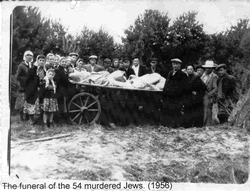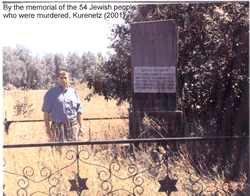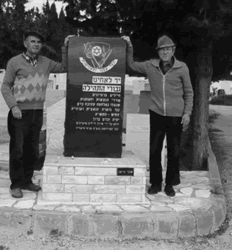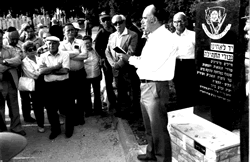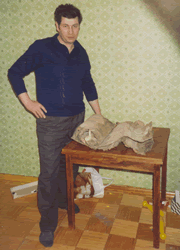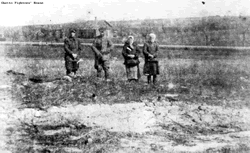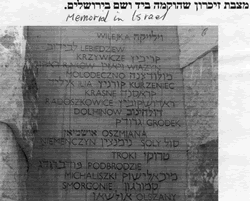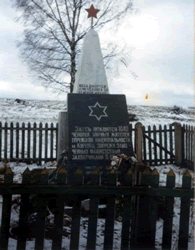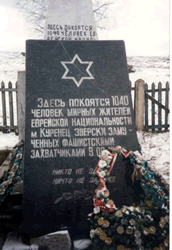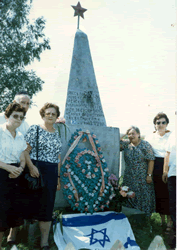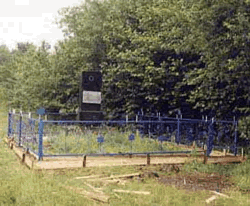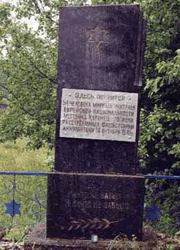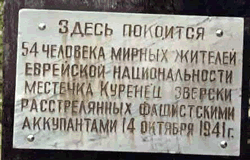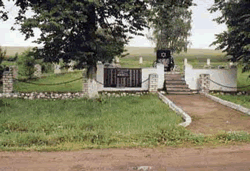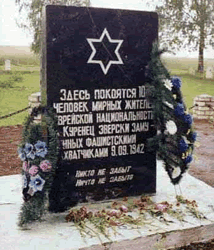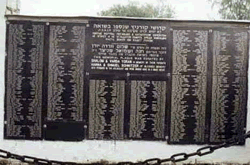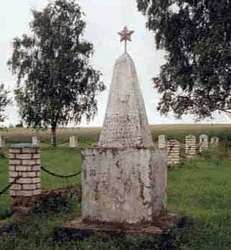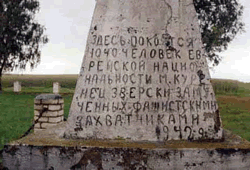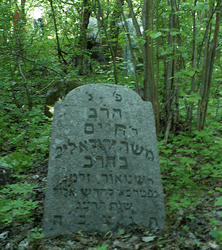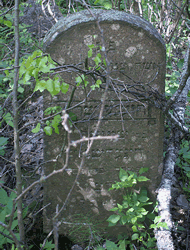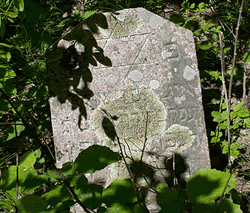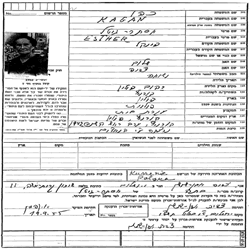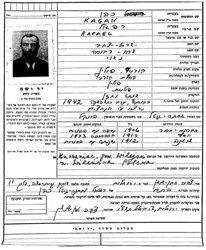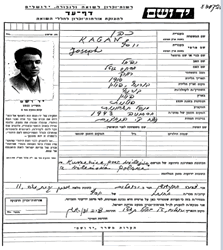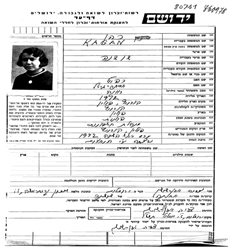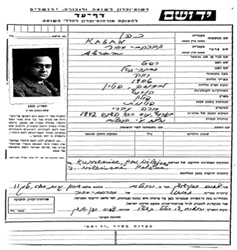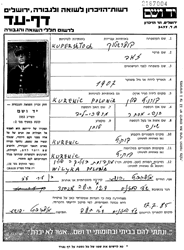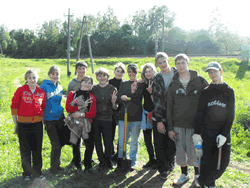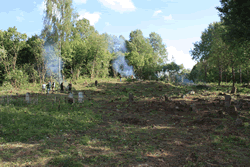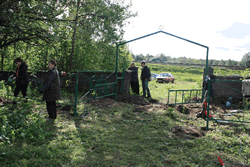#mem33:
Place of destruction of 1040 Jews. September, 9 1942. The monument was erected in 1997
credit: http://www.jewishbelarus.org/
#mem34:
Place of destruction of 1040 Jews. September, 9 1942. The monument was erected in 1997
credit: http://www.jewishbelarus.org/
#mem35:
Place of destruction of 1040 Jews. September, 9 1942. The monument was erected in 1997
credit: http://www.jewishbelarus.org/
#mem36:
The massacre site of 1040 Jews on September, 9, 1942. The monument was erected in 1955.
credit: http://www.jewishbelarus.org/
#mem37:
The massacre site of 1040 Jews on September, 9, 1942. The monument was erected in 1955.
credit: http://www.jewishbelarus.org/
#mem42:
Kagan Esther
Esther Kagan nee Finkel was born in Rakow, Poland to Shalom and
Tzvia. She was a housewife. Prior to WWII she lived in Kurzeniec,
Poland. Esther perished in 1942 in Kurzeniec, Poland. This information
is based on a Page of Testimony submitted on
19/09/1955 by her daughter Zvia Even Shoshan ( wife of
Avraham Even Shoshan )
From Zvia and Avraham' daughter: Daphna Sheffer
#mem43:
Kagan Rafael
Rafael Kagan was born in Kurenitz, Poland to Yisrael Yizhak and Sara
Dvora. He was a ritual slaughterer and Chazan (Cantor) married to
Ester Gitel nee Finkel. Prior to WWII he lived in Kurenitz, Poland.
Rafael perished in 9- 9- 1942 in Kurenitz, Poland with his wife and
children Avraham Meir ( born in 1906) and Shoshana ( born in 1912) he
son Yosef ( 1910) perished in Estonia in 1943. This information is
based on a Page of Testimony submitted by his daughter; Zvia Even
Shoshan of Jerusalem.
#mem44:
Yosef Kagan was born in Kurenets in 1910 to Ester Gitel nee Finkel
of Rakov and Raphael Kagan. He was an accountant and lived in Estonia.
Yosef Kagan perished in Estonia in 1943
information is based on a Page of Testimony submitted on by his
sister Zvia Even Shoshan of Kiryat Moshe,
Jerusalem.
#mem45:
Shoshana Kagan was born in Kurenets in 1910 to Ester Gitel nee
Finkel of Rakov and Raphael Kagan. She was an accountant and lived
in Kurenes. She perished in Kurenets in 9- 9- 1942. The information is
based on a Page of Testimony submitted on by his sister Zvia Even
Shoshan of Kiryat Moshe
#mem46:
Avraham Meir Kagan was born in Lebedove in 1906 to Ester Gitel nee
Finkel of Rakov and Raphael Kagan. He was a Teacher of Hebew studies
an perished in Kurenets in 9- 9- 1942. The information is based on a
Page of Testimony submitted on by his sister Zvia Even Shoshan of
Kiryat Moshe
#mem47:
Kupershtock Zeev
Zeev Kupershtock was born in Kurenets in 1907 to Mordekhai Leib and Khana Ester. He was a flourmiller and married to Sheina. Prior to WWII he lived in Kurenets, Poland. During the war he was in Kurenets, Poland. Zeev perished in Wielka, Poland. This information is based on a Page of Testimony (displayed on left) submitted by Yehoshua Alperovitz
#mem48:
Kurenets cemetery - youth fixing the cemetery
#mem49:
Kurenets cemetery - youth fixing the cemetery
#mem50:
Kurenets cemetery - youth fixing the cemetery
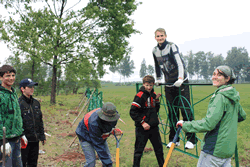
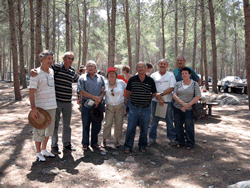
#mem51:
Kurenets cemetery - youth fixing the cemetery
#mem52:
From: shlomo alperovich <saalperovich@gmail.com>
A meeting took place in the Ben Shemen forest on 09.09.2010. It is a
memorial day for the Jews who were killed in Kurenetz on 09.09.1942
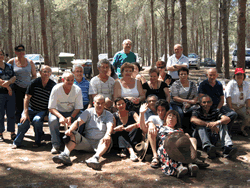
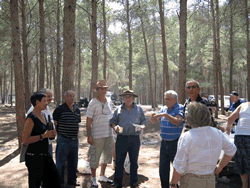
#mem53:
From: shlomo alperovich <saalperovich@gmail.com>
A meeting took place in the Ben Shemen forest on 09.09.2010. It is a
memorial day for the Jews who were killed in Kurenetz on 09.09.1942
#mem54:
From: shlomo alperovich <saalperovich@gmail.com>
A meeting took place in the Ben Shemen forest on 09.09.2010. It is a
memorial day for the Jews who were killed in Kurenetz on 09.09.1942
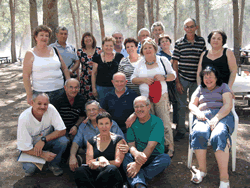
#mem55:
From: shlomo alperovich <saalperovich@gmail.com>
A meeting took place in the Ben Shemen forest on 09.09.2010. It is a
memorial day for the Jews who were killed in Kurenetz on 09.09.1942
The National Memorial
(English name, The Holocaust Martyrs' and Heroes' Remembrance Authority), Israeli national institution of Holocaust commemoration. The idea of establishing a memorial in Palestine for the Jews who fell victim to the Holocaust was conceived during World War II, when reports were received of the mass murder of Jews in the German - occupied countries. It was first proposed in September 1942, at a board meeting of the Jewish National Fund, by Mordecai Shenhavi, a member of Kibbutz Mishmar ha - Emek. Shenhavi proposed "the commemoration of the Holocaust in the Diaspora, and of the participation of the Jewish people in the Allied armies." He also proposed the name "Yad Vashem" (lit., "a monument and a name"), from Isaiah 56: 5: "I will give them, in my house and in my walls, a monument and a name, better than sons and daughters; I will give them an everlasting name that shall never be effaced."
The plan was discussed at a Zionist meeting in London on August 15, 1945, and it was decided to set up a provisional board, made up of the Zionist leaders David Remez (as chairman), Shlomo Zalman Shragai, and Baruch Zuckerman (born in Kurenitz), in addition to Shenhavi. For about a year, negotiations continued between the National Institutions, the Hebrew University, and the Chief Rabbinate of Palestine, centering mostly on the plan's financial and operational aspects. In February 1946, Yad Vashem opened an office in Jerusalem and a branch office in Tel Aviv. On June 1, 1947, it convened its first plenary session, and the following day the plan of "Yad Vashem for the Diaspora" was put on public exhibition. On July 13 and 14, 1947, the First Conference on Holocaust Research was held at the Hebrew University in Jerusalem. At the conference it was decided that the Holocaust documentation center would be located in Jerusalem, and that a thirty - one - member council and a scholarly committee would be set up.
